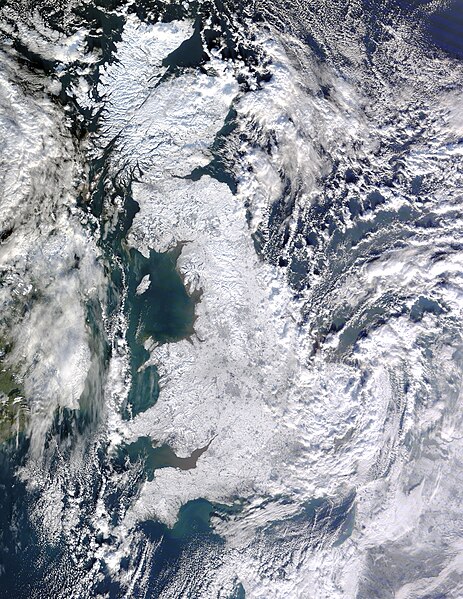Terra is a multi-national scientific research satellite operated by NASA in a Sun-synchronous orbit around the Earth. It takes simultaneous measurements of Earth's atmosphere, land, and water to understand how Earth is changing and to identify the consequences for life on Earth. It is the flagship of the Earth Observing System (EOS) and the first satellite of the system which was followed by Aqua and Aura. Terra was launched in 1999.
The effects of the European winter storms of 2009–2010 on Great Britain, seen from Terra.
The Deepwater Horizon oil spill oil slick as seen from space by NASA's Terra satellite on May 1, 2010.
Hurricane Karl, the most destructive hurricane of the 2010 Atlantic Hurricane Season, approaches Mexico on September 16.
Satellite image of the Ash distribution over Australia from the 2022 Hunga Tonga–Hunga Ha'apai eruption.
The Earth Observing System (EOS) is a program of NASA comprising a series of artificial satellite missions and scientific instruments in Earth orbit designed for long-term global observations of the land surface, biosphere, atmosphere, and oceans. Since the early 1970s, NASA has been developing its Earth Observing System, launching a series of Landsat satellites in the decade. Some of the first included passive microwave imaging in 1972 through the Nimbus 5 satellite. Following the launch of various satellite missions, the conception of the program began in the late 1980s and expanded rapidly through the 1990s. Since the inception of the program, it has continued to develop, including; land, sea, radiation and atmosphere. Collected in a system known as EOSDIS, NASA uses this data in order to study the progression and changes in the biosphere of Earth. The main focus of this data collection surrounds climatic science. The program is the centrepiece of NASA's Earth Science Enterprise.

TIROS-1 Satellite displayed at National Air and Space Museum in Washington
NASA Earth Science Division Operating Missions as of 2 February 2015
Illustration of Sentinel 6B
Cumuionimbus INCUS clouds over Poland. The aim of EVM-3 INCUS is to investigate the formation of these clouds and thunderstorms often associated.








